The Sahara Desert is the largest hot desert on planet Earth. It sits in North Africa, covering parts of Egypt, Libya, Sudan, and Chad, and is famous for its sand dune fields and major rivers of the Nile and Niger. Along with its stunning geographic features, the Sahara has immense biodiversity, despite its extreme terrain. You will find everything from snakes and scorpions to sheep and gerbils. Check out these 25 animals that call the Sahara Desert their home and learn more facts about these interesting creatures.
1. Deathstalker Scorpion
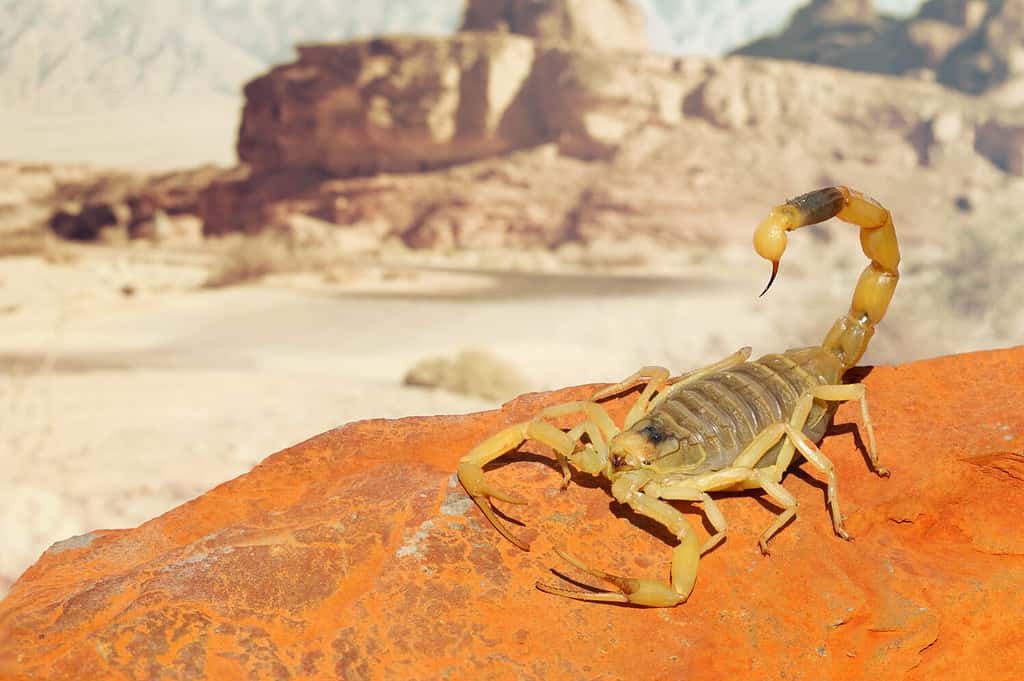
Deathstalker scorpions lay under rocks or in burrows during the day.
©Protasov AN/Shutterstock.com
The deathstalker scorpion is one of the most dangerous scorpion species in the world. It features powerful neurotoxins and a low lethal dose. While they are dangerous and their stings are very painful, death from a deathstalker sting is very rare. These nocturnal creatures beat the heat by taking shade under rocks or in burrows during the day.
2. Addax Antelope
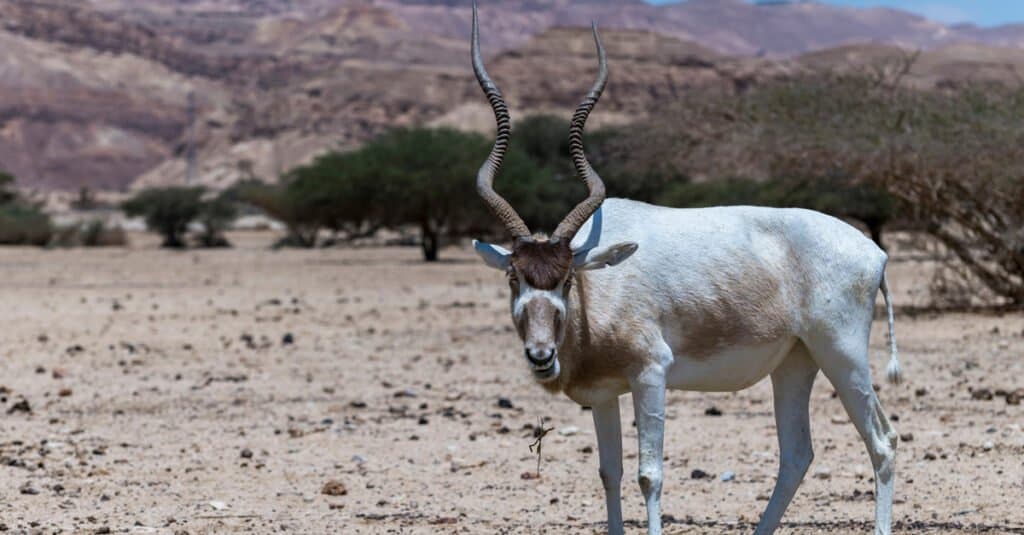
The most distinctive feature of an Addax is its spiral horns.
©Sergei25/Shutterstock.com
Known for its long, spiral horns, Addax are desert-adapted antelope that change their coat colors to maintain their body temperatures during climate fluctuations from summer to winter. They also dig depressions in the sand to rest and stay cool. You can find these animals near vegetation in the Sahara Desert.
3. Saharan Sand Viper

The color of the sand viper helps it to blend in with its habitat where it hunts for prey.
©reptiles4all/Shutterstock.com
Common among the sand dunes of the Saharan Desert, sand vipers are smaller snakes that hunt at night and hide under bushes or bury themselves in the sand during the day. They are solitary creatures that have potent venom that they use to subdue somewhat larger prey.
4. Dromedary Camel

Dromedary camels only have one hump.
©Benny Marty/Shutterstock.com
While it goes by many names, the dromedary camel is a common animal of the Sahara Desert. This camel only has one hump, but it can store up to 80 pounds of fat, and its short, thick fur protects them from the scorching sun during the day.
5. Saharan Silver Ant
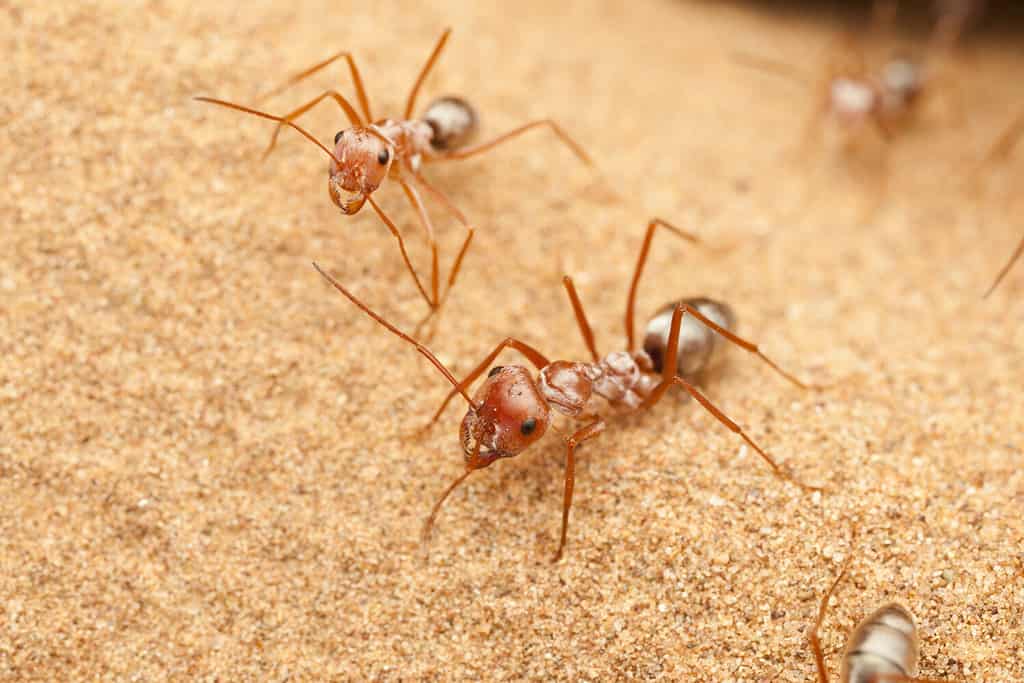
Saharan silver ants can move speedily across the sand.
©Pavel Krasensky/Shutterstock.com
The Saharan silver ant is the world’s fastest ant, running its body length in less than a hundredth of a second. This ant speeds across the slippery hot sand in search of dead animals that it can devour. Its tiny body hairs regulate its body temperature, an adaptive feature that helps it survive in its harsh environment.
6. Desert Monitor

Desert monitors are excellent diggers.
©Abdelrahman M Hassanein/iStock via Getty Images
This species of monitor lizard is found throughout North Africa and is perfectly suited to its desert environment. They are excellent diggers that build burrows several feet long where they can beat the heat. These lizards are known for their sharp claws and venom-secreting glands that can kill small prey.
7. Northwest African Cheetah
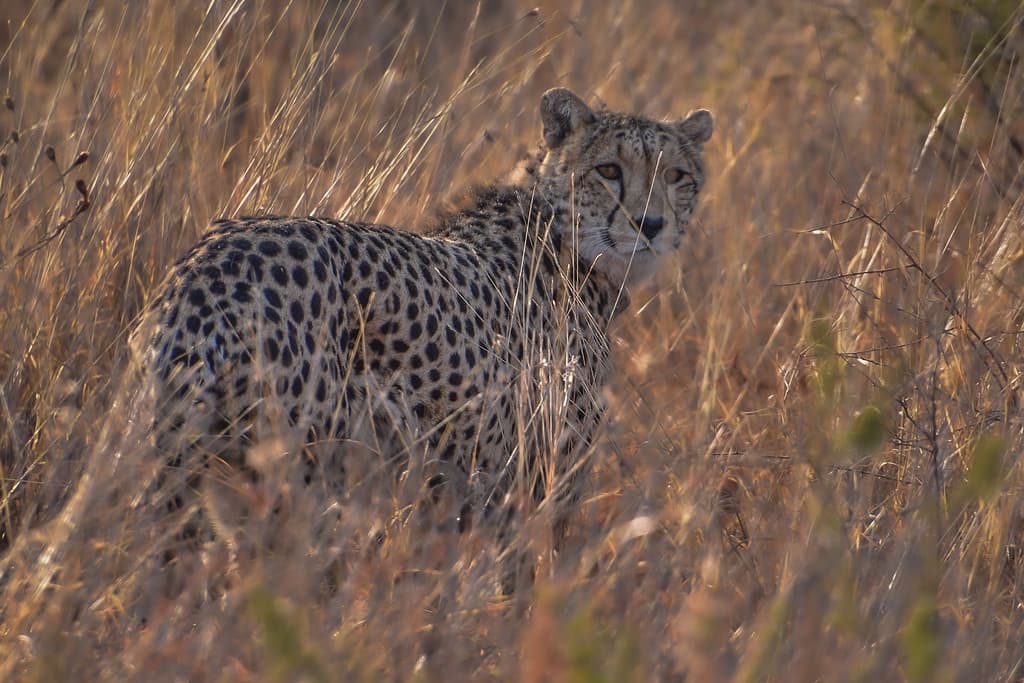
Northwest African cheetahs are critically endangered.
©Wirestock/iStock via Getty Images
The Northwest African cheetah is a critically endangered species that is extinct in more than 20 countries. Around 8,000 remain in the wild, with some living in the Sahara Desert region, where it is native. Like other cheetahs, this subspecies is just as fast. In fact, cheetahs are the fastest land animals.
8. Desert Crocodile

West African crocodiles are also known as desert crocodiles.
©Anton Ivanov/Shutterstock.com
The desert crocodile, also known as the West African crocodile, is considered sacred in some countries. This species is always near water, where they bask during the day and hunt mainly at night. Desert crocodiles are distant relatives of Nile crocodiles and are often confused with them.
9. Jerboa
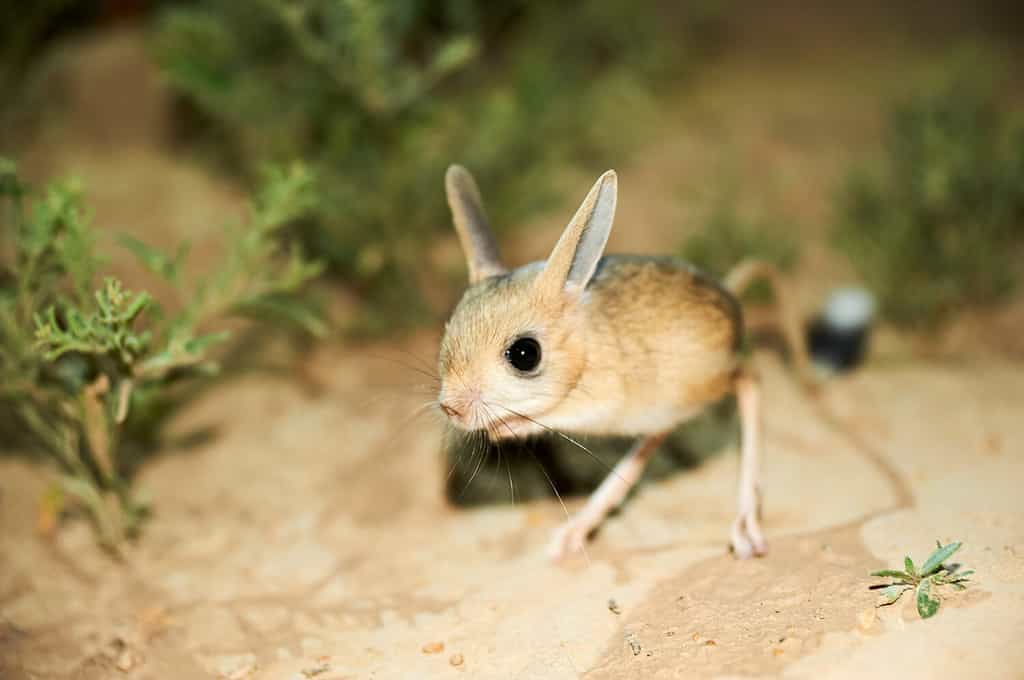
Jerboas are desert rodents that can run up to 15 miles per hour!
©Yerbolat Shadrakhov/Shutterstock.com
The jerboa is a hopping desert rodent that lives in North Africa, where it favors hot deserts, like the Sahara. While rodents are exposed to predators in the desert, jerboas can run up to 15 miles per hour and have incredible hearing that helps them out-smart nocturnal predators.
10. Dorcas Gazelle
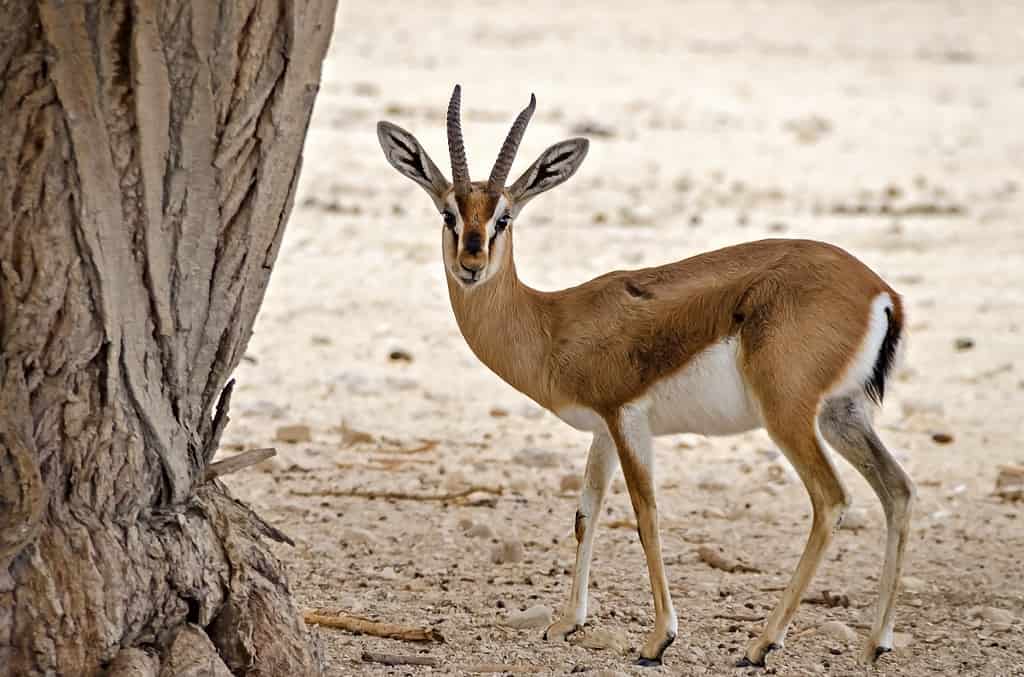
Dorcas gazelles get all the moisture they need from their food.
©gorsh13/iStock via Getty Images
This small, common gazelle lives in semideserts of Africa. They are notable for their long ears and strongly curved horns. These gazelles are so well adapted to their desert homes that they never need to drink. They soak up moisture from their food and they rest during the hottest times of the day, ensuring they don’t lose essential water.
11. Black-Faced Firefinch
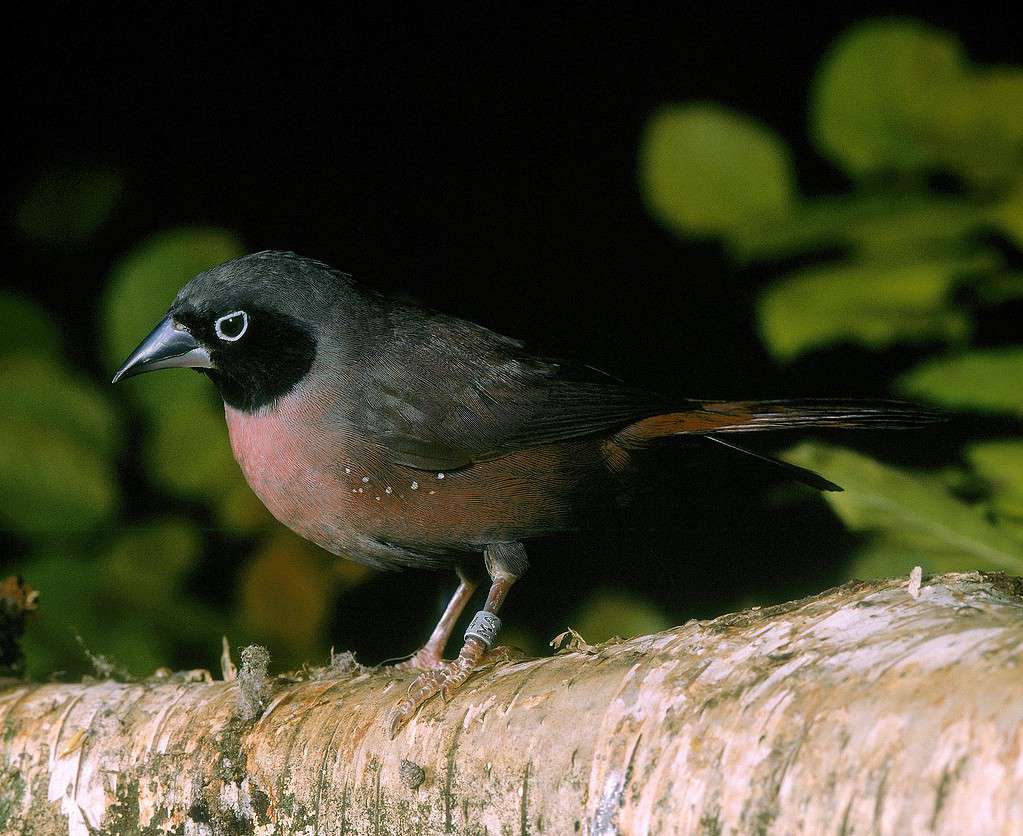
The black-faced firefinch features gray and red or pink plumage.
©slowmotiongli/iStock via Getty Images
This distinctive firefinch has gray and red plumage and an all-black face. Black-faced fire finches are a common species of estrildid finch in Africa. Males and females appear differently, with females featuring mainly grayish brown feathered with a reddish tint.
12. Fennec Fox
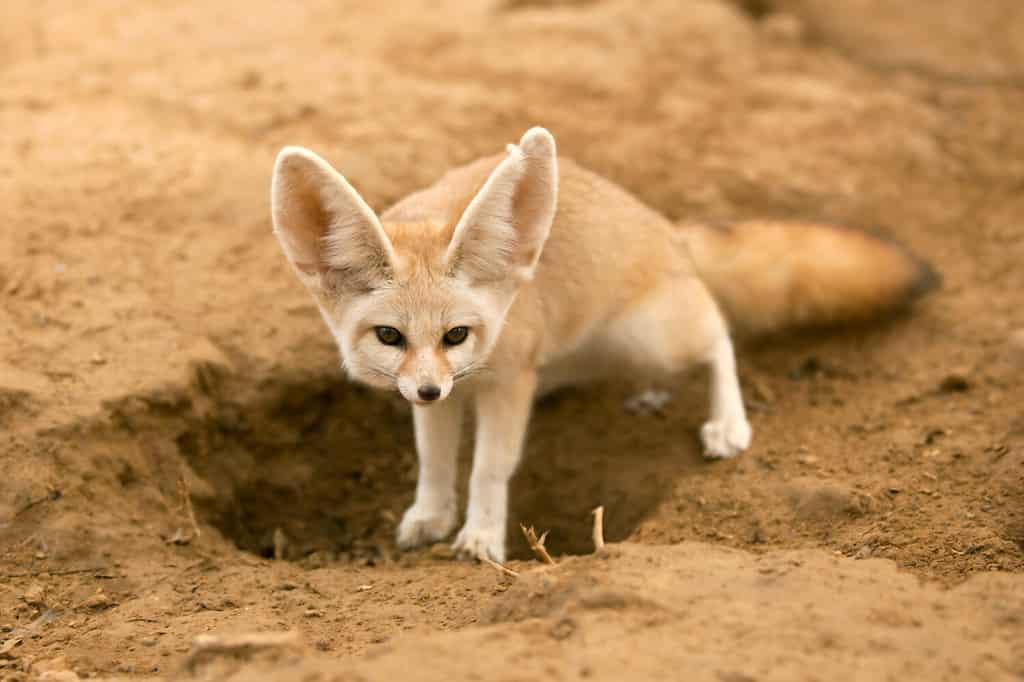
Fennec fox
es are nocturnal and live in burrows.
©hagit berkovich/Shutterstock.com
This small fox is known for its large ears and desert home. It is native to the Western Sahara, where it prefers to inhabit areas with desert grasses and scrub vegetation. Fennec foxes are nocturnal and share extensive burrows with up to a dozen other individuals. They communicate with high-pitched yelps.
13. African Silverbill
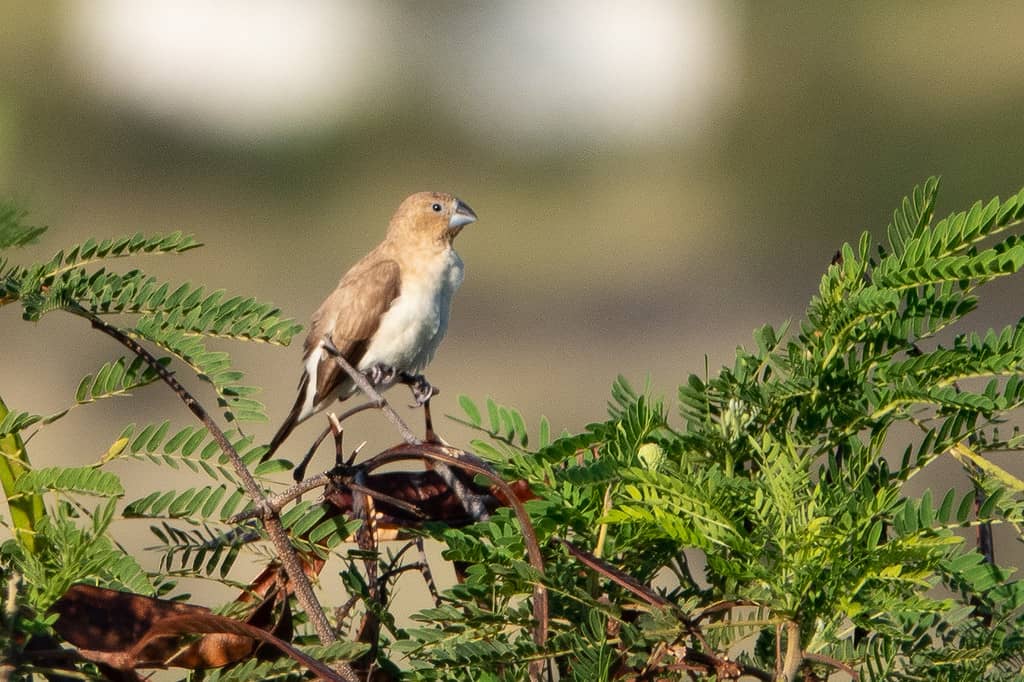
African silverbills live near the southern Sahara in dry savannahs.
©CC BY 2.0 – License
The African silverbill is a small passerine and an estrildid finch. It lives in dry savannahs near the south end of the Sahara Desert, where it prefers thorn bush, dry grasslands, and acacia grasslands. These birds are tame and sociable, often perching in trees with large flocks.
14. Dung Beetle

Dung beetle
s roll feces into round balls.
©Michael Potter11/Shutterstock.com
These interesting beetles are known for their peculiar diet. Dung beetles eat feces and can bury ding 250 times their own body mass in less than one day. While some bury feces in random places, others roll it into balls and feed or breed in them. Dung beetles are essential to the ecosystem, as they break down and recycle feces into the soil.
15. North African Gerbil

North African gerbils are pests to farmers.
©CC BY-SA 4.0 – License
True to its name, the North African gerbil inhabits rocky areas and hot Saharan deserts in North Africa. Part of the rodent family, these gerbils are often considered pests to farmers due to their burrowing habits. North American gerbils have long, soft fur and tails twice the length of their body.
16. Red-Necked Ostrich
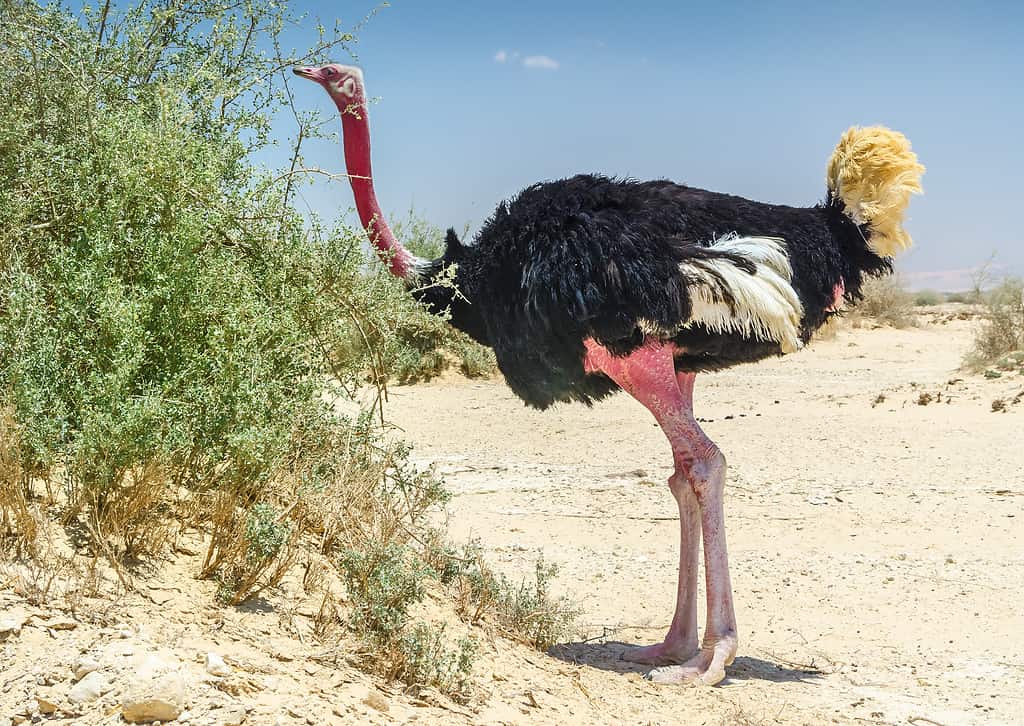
Red-necked ostriches stand 9 feet tall.
©gorsh13/iStock via Getty Images
The red-necked ostrich, also known as the North African ostrich, is the largest subspecies of ostrich and the largest living bird. They can weigh up to 340 pounds and stand at nine feet tall. They are widespread from West to Northeast Africa, where they live in savannahs, grasslands, deserts, and plains.
17. African Wild Dog

African wild dogs are typically non-aggressive toward humans.
©William Steel/Shutterstock.com
These wild canines are native to sub-Saharan Africa, where their population is decreasing. African wild dogs are facing threats, such as viral diseases, habitat loss, killings by humans, and competing with larger predators. Despite their wildness, these dogs are relatively non-aggressive and typically approach humans out of curiosity.
18. Barbary Sheep
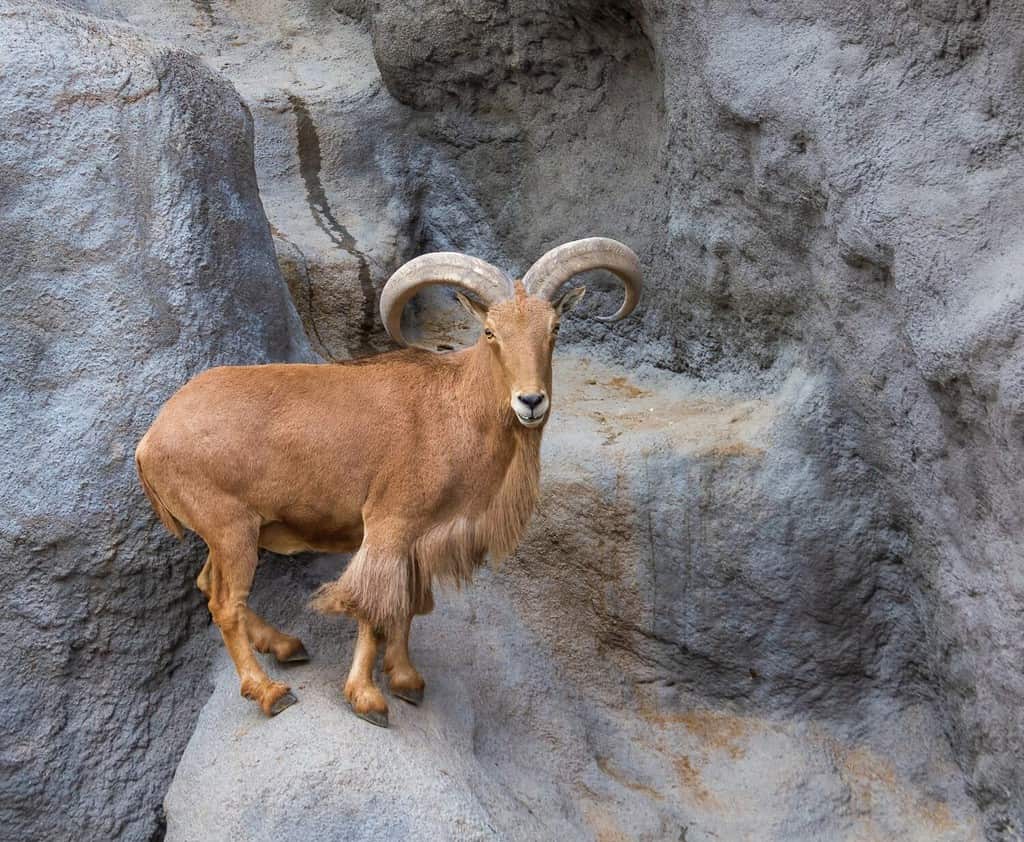
Barbary sheep are native to North Africa.
©Smiler99/Shutterstock.com
While you might recognize barbary sheep as North American animals, they are actually native to North Africa and were introduced elsewhere. Easily recognized by its brown fleece and heavy, backward-curving horns, barbary sheep are the only wild sheep living in Africa. They inhabit dry, rocky areas of the Sahara, where they live in small groups.
19. Cape Hare
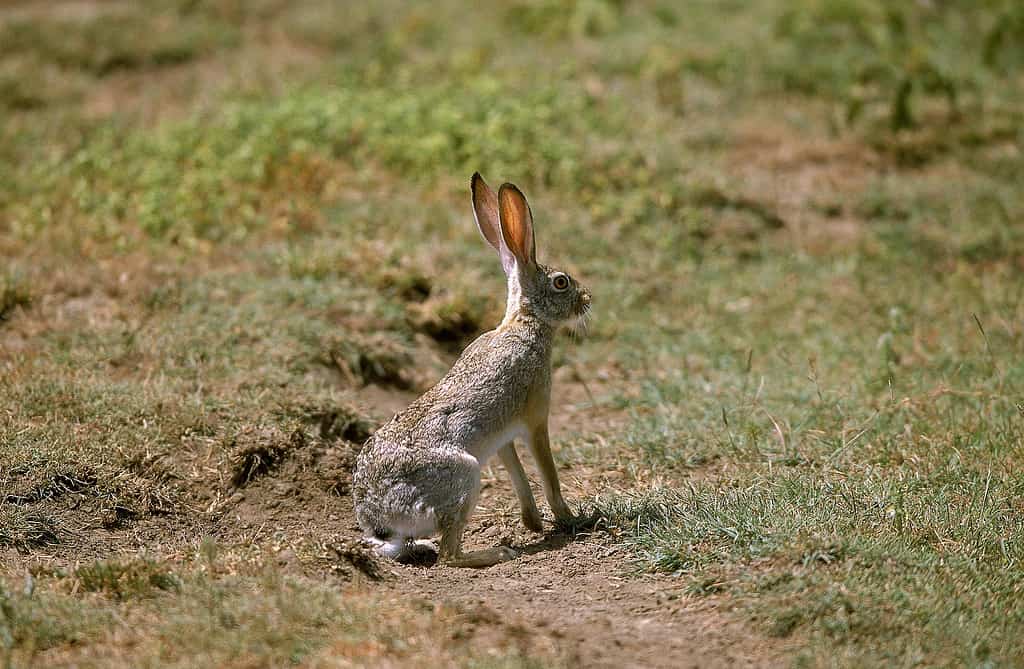
Cape hares live in grasslands and the Sahara in Africa.
©slowmotiongli/iStock via Getty Images
This species is a typical hare with large eyes and ears to perceive threats and well-developed legs for escape. Cape hares are native to different habitats in Africa, like grasslands and the Sahara Desert. They are nocturnal herbivores that feed on desert vegetation.
20. Rock Hyrax
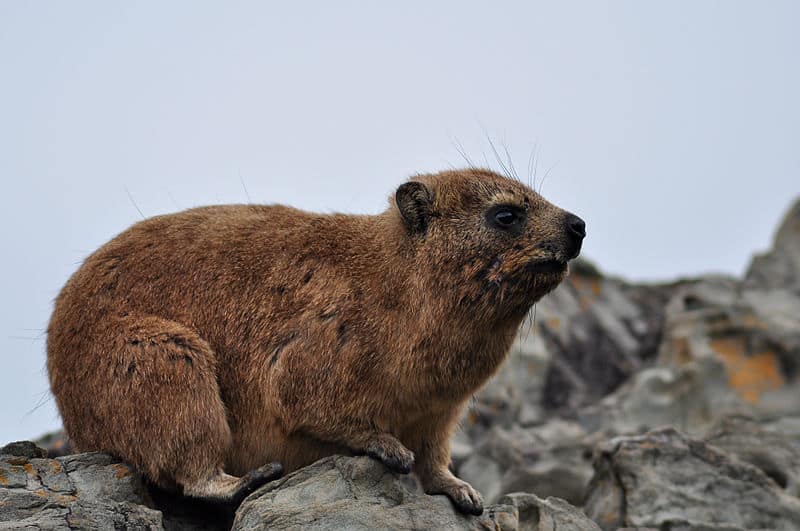
Rock hyrax live in rock crevices and stay active in the mornings and evenings.
©Derkarts, CC BY-SA 3.0, via Wikimedia Commons – License
The hyrax is an unusual-looking mammal native to Africa, and the rock hyrax, specifically, inhabits sub-Saharan Africa. This medium-sized land animal lives in rock crevices at higher elevations, which allows them to effectively escape from predators. To thermoregulate their bodies, they are more active in the early mornings and evenings.
21. Desert Horned Viper
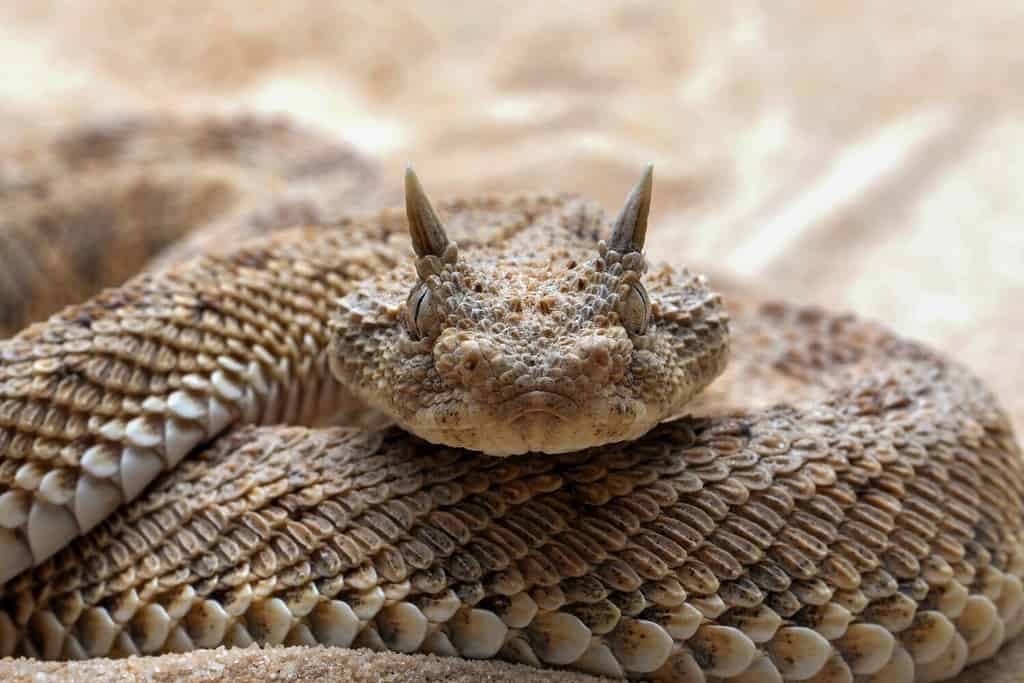
Desert horned vipers feature “horns” above their eyes.
©Lauren Suryanata/Shutterstock.com
Native to the deserts of North Africa, the desert horned viper is a venomous species easily recognizable by its supraocular, horn-like scales above the eyes. This species likes dry, sandy regions and moves by sidewinding across the desert. When threatened, they rub their hard coils together, which makes a rasping noise.
22. Scimitar-Horned Oryx
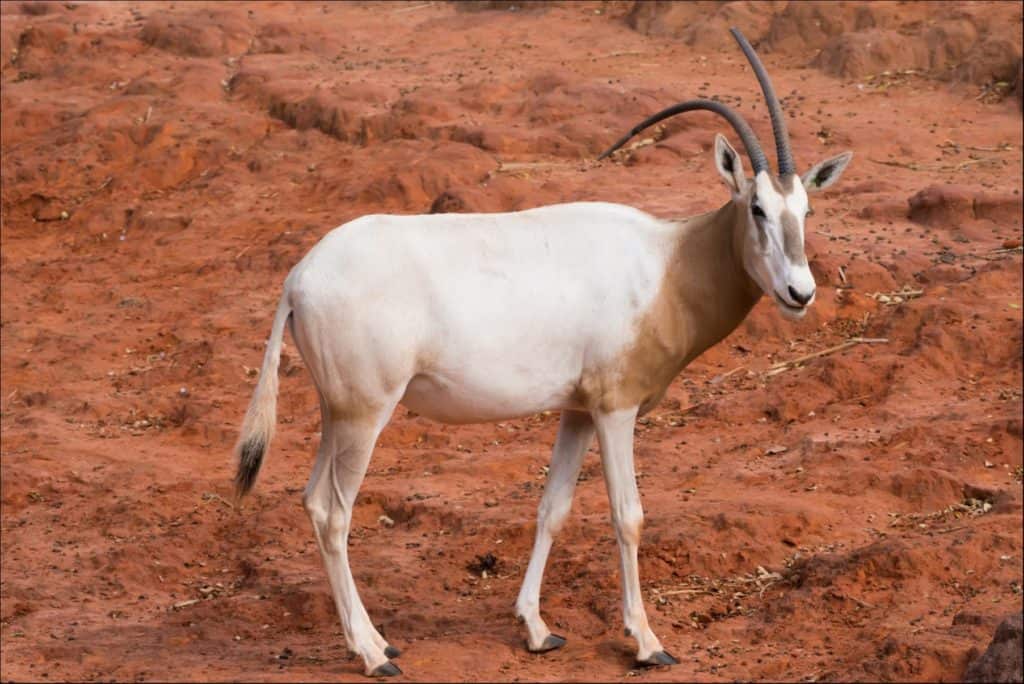
Scimitar-horned oryx
are officially extinct in the wild.
©KE.Take a Photo/Shutterstock.com
This majestic creature was once widespread across Northern Africa but is now considered extinct in the wild. While conservation efforts have attempted to reintroduce them into their preferred habitats, they have not been particularly successful. Scimitar-horned oryx went extinct due to over hunting, loss of food from livestock grazing, and drought.
23. Dama Gazelle
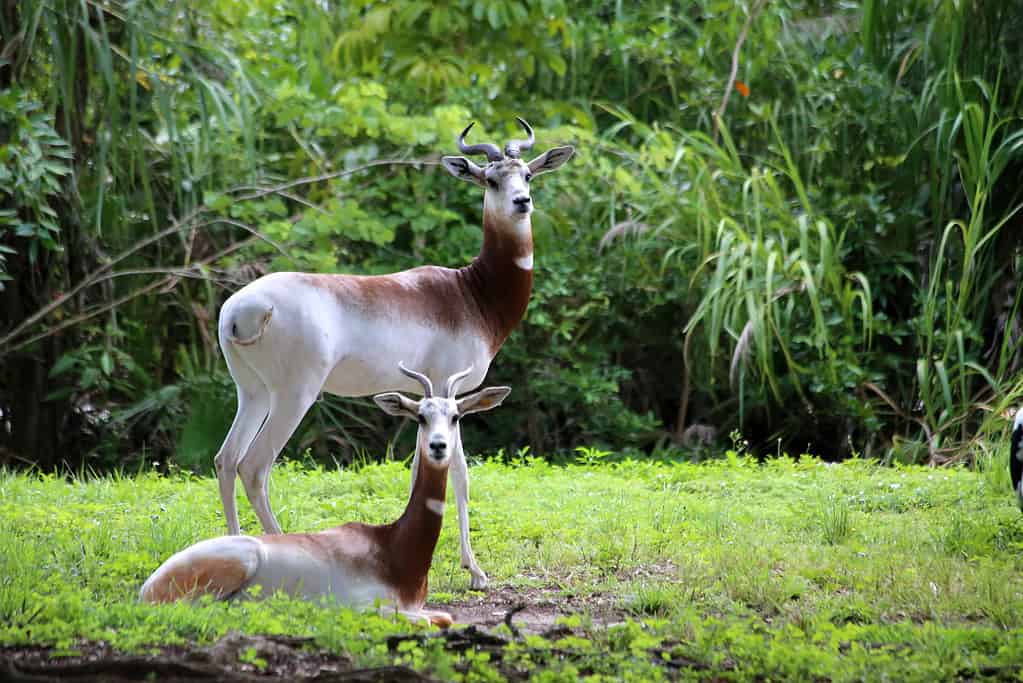
Natural populations of the dama gazelle remain in Chad, Mali, and Niger.
©iStock.com/cuatrok77photograph
This species of gazelle lives in the Sahara Desert and the Sahel region of Africa. Due to overhunting and habitat loss, the dama gazelle is critically endangered and has disappeared from most of its native range. These gazelles live in semi-deserts, grasslands, shrublands, and mountain plateaus.
24. Anubis Baboon

Anubis baboons are complicated social creatures.
©Stolz, Gary M, Public domain, via Wikimedia Commons – License
The Anubis baboon, also known as the olive baboon, ranges across central sub-Saharan Africa, where it lives in savannahs and forests. However, isolated populations inhabit the Saharan region. These baboons live in groups of 15 to 150 and have complex social structures. Each baboon has a social ranking within its group and adult females form the core of the group.
25. Desert Hedgehog
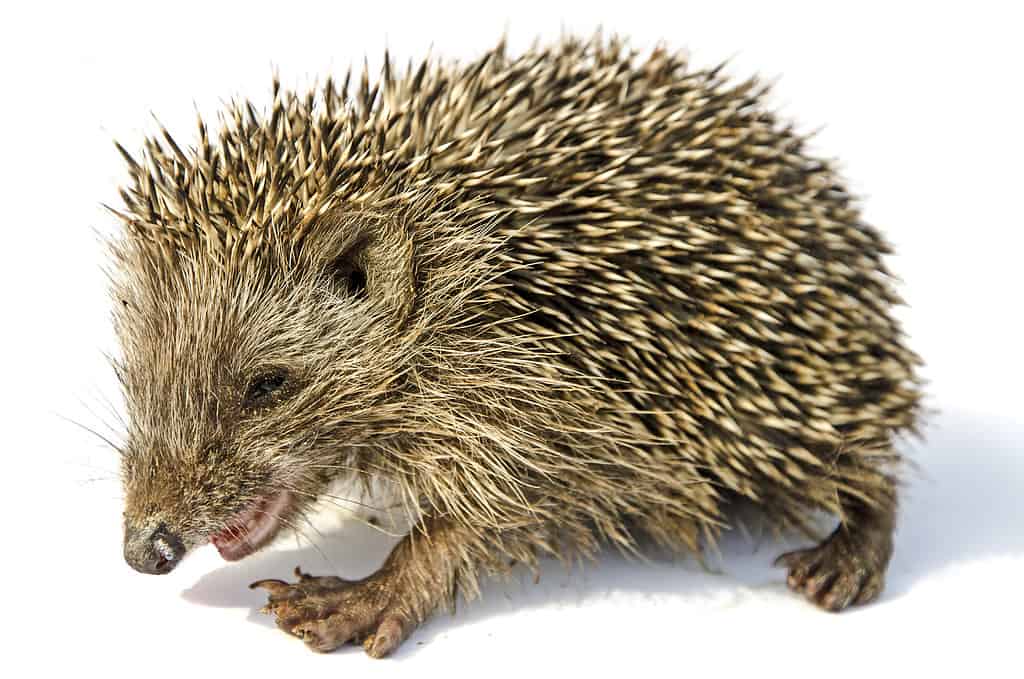
Desert
hedgehog
s have longer quills than other species.
©vaeenma/iStock via Getty Images
Among the smallest of the hedgehogs, this desert species is between 5 and 11 inches long. Their quills are longer than other hedgehogs and work better against predators. Desert hedgehogs are distributed across the Sahara and the Arabian Peninsula, where they can survive in very arid climates. However, you are likely to spot them around oases.
A Comprehensive List of the Animals That Call the Sahara Desert Home
| Number | Animals That Call the Sahara Desert Home |
|---|---|
| #1 | Deathstalker scorpion |
| #2 | Addax antelope |
| #3 | Saharan sand viper |
| #4 | Dromedary camel |
| #5 | Saharan silver ant |
| #6 | Desert monitor |
| #7 | Northwest African cheetah |
| #8 | Desert crocodile |
| #9 | Jerboa |
| #10 | Dorcas gazelle |
| #11 | Black-faced firefinch |
| #12 | Fennec fox |
| #13 | African silverbill |
| #14 | Dung beetle |
| #15 | North African gerbil |
| #16 | Red-necked ostrich |
| #17 | African wild dog |
| #18 | Barbary sheep |
| #19 | Cape hare |
| #20 | Rock hyrax |
| #21 | Horned viper |
| #22 | Scimitar-horned oryx |
| #23 | Dama gazelle |
| #24 | Anubis baboon |
| #25 | Desert hedgehog |
| #26 | Nubian wild ass |
| #27 | Spotted hyena |
| #28 | Nubian bustard |
| #29 | Desert hedgehog |
| #30 | Libyan striped weasel |
| #31 | Slender mongoose |
| #32 | African clawed frog |
| #33 | Secretary bird |
| #34 | skink |
| #35 | Desert eagle owl |
| #36 | Sand lark |
| #37 | Desert snail |
| #38 | Cobra |
| #39 | Pale crag martin |
| #40 | Sand cat |
The photo featured at the top of this post is © Protasov AN/Shutterstock.com
Thank you for reading! Have some feedback for us? Contact the AZ Animals editorial team.






